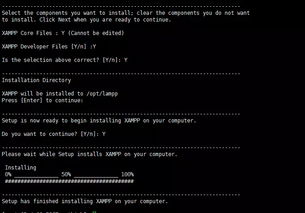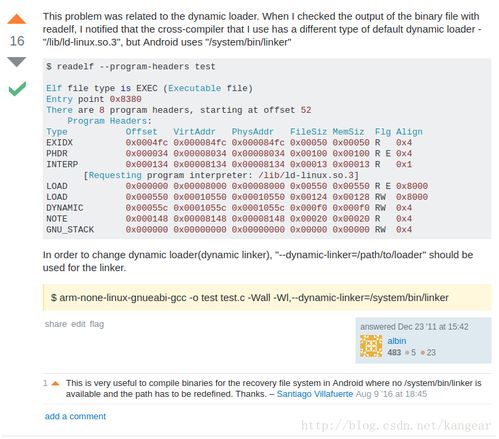The Linux Linker: A Comprehensive Guide
The Linux linker is a critical component of the Linux operating system, responsible for combining various object files and libraries into a single executable file. This guide will delve into the intricacies of the Linux linker, exploring its role, functionality, and usage. Whether you are a seasoned developer or a beginner, understanding the Linux linker is essential for mastering the art of creating efficient and robust software.
Understanding the Linker’s Role

The linker plays a crucial role in the software development process. After the compilation phase, where source code is translated into object files, the linker takes these object files and combines them into a single executable file. This process involves resolving external references, symbol resolution, and relocation of symbols.
External references occur when one object file references a symbol defined in another object file or library. The linker’s task is to locate and resolve these references, ensuring that the final executable can access all the required symbols. Symbol resolution involves finding the definitions of symbols used in the object files, while relocation is the process of adjusting the addresses of symbols to match the final memory layout of the executable.
Linker Types and Formats

There are several types of linkers available in the Linux ecosystem, each with its own unique features and capabilities. The most commonly used linkers are GNU ld (GNU Linker), Gold (GNU Linker with Gold), and BFD (Binary File Descriptor). Let’s take a closer look at each of these linkers.
| Linker | Description |
|---|---|
| GNU ld | GNU ld is the traditional linker used in the Linux ecosystem. It is widely used due to its flexibility and extensive feature set. GNU ld supports various object file formats and architectures, making it a versatile choice for developers. |
| Gold | Gold is a newer linker developed by the GNU Project. It aims to improve upon the GNU ld by providing better performance and stability. Gold is known for its efficient symbol resolution and support for position-independent code. |
| BFD | BFD is a library used by various linkers, including GNU ld and Gold. It provides a common interface for handling binary file formats, making it easier for developers to work with different linkers and architectures. |
Linker Flags and Options

Linker flags and options are essential for controlling the linking process and achieving the desired outcome. Here are some commonly used linker flags and their purposes:
-o: Specifies the output file name for the executable.-L: Adds directories to the library search path.-l: Links a specific library to the executable.-Wl,: Passes arguments directly to the linker.
These flags and options can be combined to achieve complex linking scenarios. For example, to link an executable named “myapp” with the “libfoo” library, you would use the following command:
gcc -o myapp myapp.o -L/path/to/lib -lfooLinker Scripts
Linker scripts are used to control the layout of the executable’s memory segments. They allow developers to define the placement of symbols, sections, and libraries within the executable. Linker scripts are particularly useful when working with complex projects or when specific memory layout requirements are necessary.
Here is an example of a simple linker script:
SECTIONS{ .text : { (.text) } .data : { (.data) } .bss : { (.bss) }}This script defines three sections: .text for code, .data for initialized data, and .bss for uninitialized data. By using linker scripts, developers can fine-tune the memory layout of their executables to optimize performance and resource usage.
Linker Optimization
Optimizing the linking process can significantly improve the performance and efficiency of your software. Here are some tips for optimizing the Linux linker:
- Use the appropriate linker for your project. Different linkers have different strengths and weaknesses, so choose the one that best suits your
















